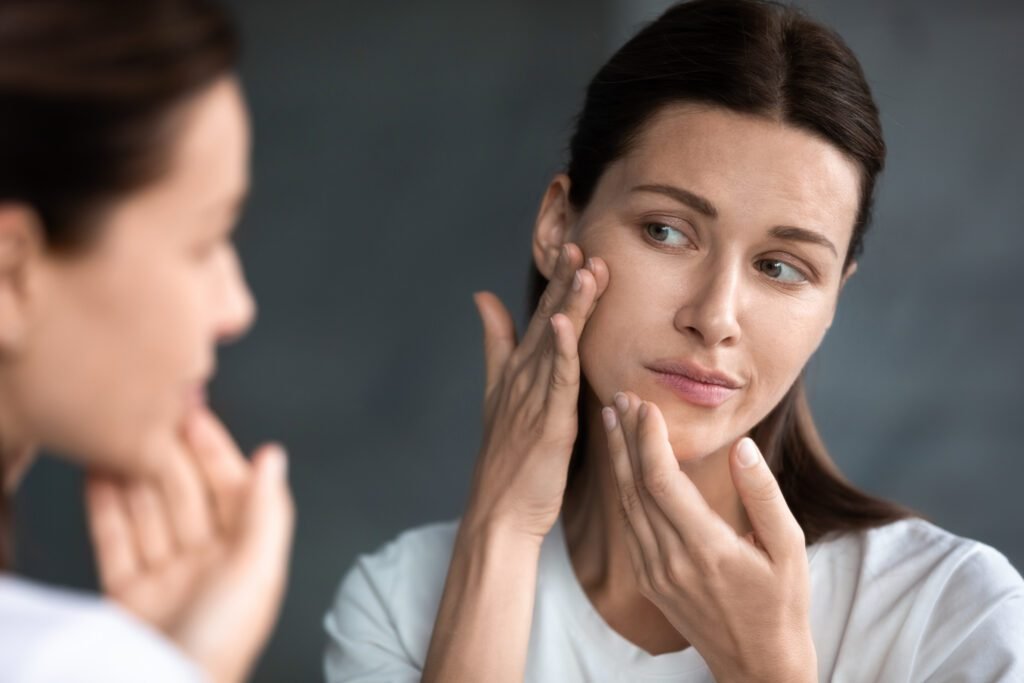Understanding Your Skin: A Comprehensive Guide to Health Insights
Our skin, the body’s largest and most intricate organ, serves a multitude of vital functions. Beyond being a protective barrier against the environment, it plays a pivotal role in regulating temperature, storing water and fat, and even producing vitamin D when exposed to sunlight. However, its significance goes beyond mere protection; it can also provide crucial insights into our overall health.
How Skin Reflects Our Health
The connection between skin conditions and underlying health issues is well-established. Renowned dermatologist Anthony Rossi explains that there are numerous skin signals that can alert us to potential medical concerns. While many skin conditions may seem innocuous, they could be indicative of more serious health problems.
Common Skin Indicators of Health Issues
-
Yellowing of the Skin/Sciera:
- A yellowish tint in the skin or the whites of the eyes may signal elevated liver enzymes or bilirubin levels, commonly associated with conditions like jaundice. Learn more about liver health.
-
Carotenemia:
- A deep yellow color in the palms or a yellowish-orange hue to the skin could be caused by excessive consumption of beta-carotene, frequently found in carrots and sweet potatoes.
-
Itchy Skin:
- While often benign, persistent itchiness can indicate underlying issues such as diabetes or lymphoma. Conditions like eczema and psoriasis are more common causes. Discover more about skin conditions.
-
Rashes:
- Various causes, from heat to allergies, can lead to rashes. However, distinctive rashes can signal conditions such as Lyme disease or lupus. Explore more about rashes.
-
Genetic Conditions:
- If skin heals poorly or exhibits excessive stretchability, conditions such as Ehlers-Danlos syndrome may be at play, affecting connective tissues.
-
Signs of Heart Disease:
- Certain heart issues can manifest as purple spots on the hands or other areas. The presence of red dots that don’t fade when pressed may indicate blood vessel inflammation.
- Scurvy:
- A rare condition due to Vitamin C deficiency can lead to easy bruising and corkscrew hair, although it’s more common in developing regions. Learn about scurvy’s effects.
Lifestyle Impacts on Skin
Your skin can reveal a lot about your lifestyle choices, including:
-
Sun Exposure: A tanned appearance may indicate significant outdoor activity, though it also raises the risk of skin damage over time. Read more on sun safety.
-
Smoking: Smokers often exhibit changes like discoloration of the fingers and dark spots due to skin aging and damage to collagen. Smoking alters skin elasticity, resulting in premature wrinkles. Find out more on smoking effects.
-
Sleep Deprivation: Signs of inadequate sleep, including saggy skin and dark circles under the eyes, may reflect overall fatigue. A dermatologist’s insight highlights the link between sleep and skin health.
- Dehydration: Skin can become sunken and dry due to insufficient hydration, a common issue during winter months or from excessive sanitization practices. Explore hydration tips.
What Does Healthy Skin Look Like?
Understanding the signs of healthy skin can help in monitoring your skin’s condition. Key indicators include:
-
Hydration: Well-hydrated skin appears smooth and elastic without cracking or excessive dryness.
-
Even Coloring: A relatively uniform skin tone and limited spontaneous bruising are markers of healthy skin.
-
Diversity: Healthy skin can feature variations in color, such as freckles, and may show lines and wrinkles, reflecting the natural aging process.
- Texture: Healthy skin often feels smooth and may exhibit varied textures—smoother around the eyes and coarser on the cheeks. Read more about skin types.
In summary, a closer inspection of your skin can reveal volumes about your health and lifestyle. Regular check-ins with a dermatologist can provide personalized insights and guidance on maintaining healthy skin.
For more detailed information on dermatological health, visit reputable sources like the American Academy of Dermatology and Healthline.


